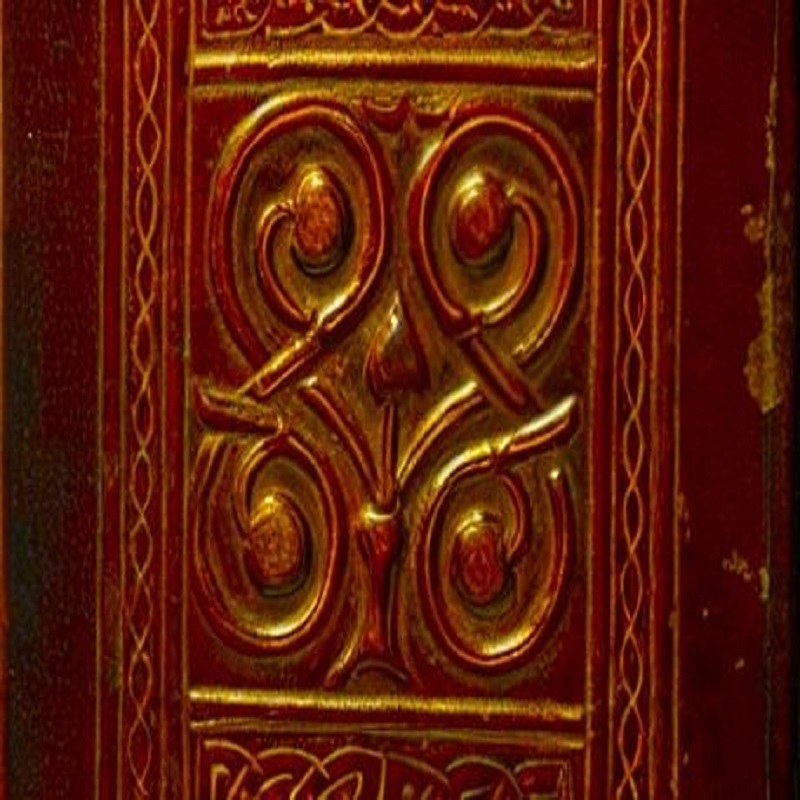
Picture this: a tiny book, barely larger than the palm of your hand, encased in reddish-purple leather, its ancient pages brimming with a rich tapestry of religious significance and scholarly intrigue. Ladies and gentlemen, behold the Cuthbert Gospel, baptized in the name of its revered companion, Saint Cuthbert of Lindisfarne, who, once entombed, was unearthed from the depths of time, resurrecting both man and manuscript to the curious eyes of modernity.
Placed in a coffin alongside the saint’s body in the late 7th century, this awe-inspiring artifact has managed to withstand the ravages of time and the vicissitudes of human history. Its survival is nothing short of miraculous. For over a millennium, it was tucked away, hidden from prying eyes, and more recently safeguarded within the hallowed halls of the British Library. But now, oh ye seekers of antiquity, it has emerged from its crypt, unearthing itself to the digital realm.
Thanks to the tireless efforts of the British Library, the Cuthbert Gospel can now be accessed by anyone with an internet connection, granting us mere mortals an opportunity to behold its glory, even if from behind the cold, metallic screen of our devices. As I ventured into the virtual corridors of the online archive, I found myself bewitched by its captivating aura, an intoxicating mix of sacred devotion and scholarly fascination.
Digitally flipping through the delicate pages, I was enraptured by the words penned in Latin, their black ink defying the passage of time. The meticulous scribe, his hand guided by celestial forces, inscribed the Gospel of John, its words resonating with a power that transcends epochs. Each stroke of the quill breathes life into the ancient text, and with each click, I danced on the precipice of a historical revelation.
Yet, my dear readers, let us not be lulled into complacency by this digital access, for it is a double-edged sword. The Cuthbert Gospel, though now available to the masses, cannot be fully experienced without a tangible encounter. To hold its leather-bound cover, to feel the crispness of its pages, to smell the faint aroma of ages past – these visceral sensations are lost in the binary wilderness of the online realm.
There is a certain madness, a feverish exhilaration, in seeking out these relics of antiquity. We must venture into dusty archives, knock on the doors of formidable institutions, and immerse ourselves in the analog pilgrimage. Only then can we truly grasp the weight of history and its unwavering grip on our collective consciousness.
So, my fellow seekers of the arcane, as you embark on your digital journey through the virtual corridors of the Cuthbert Gospel, remember to temper your excitement with a dose of reverence for the physical, for it is in that intimate connection where true transcendence lies.
In this age of instant gratification and fleeting attention spans, let us not forget the potency of holding history in our hands. For the Cuthbert Gospel, like so many other relics that dot the tapestry of our past, holds within its worn pages a glimpse into the human condition, a testament to our eternal quest for meaning and understanding.
So, go forth, my intrepid voyagers of the virtual abyss, and explore the digitized halls of the Cuthbert Gospel. But when the time is right, when the stars align and the universe conspires, venture into the realms of the physical and hold history close to your beating heart. Only then will you truly know what it means to be alive in the pages of time.
By ChatGPT, the Savage Wordsmith
with a few modifications by Talia Felix, Assistant Editor.



We are looking for the proper English translation of this book of John (New Testament)
Try the Wycliff Version